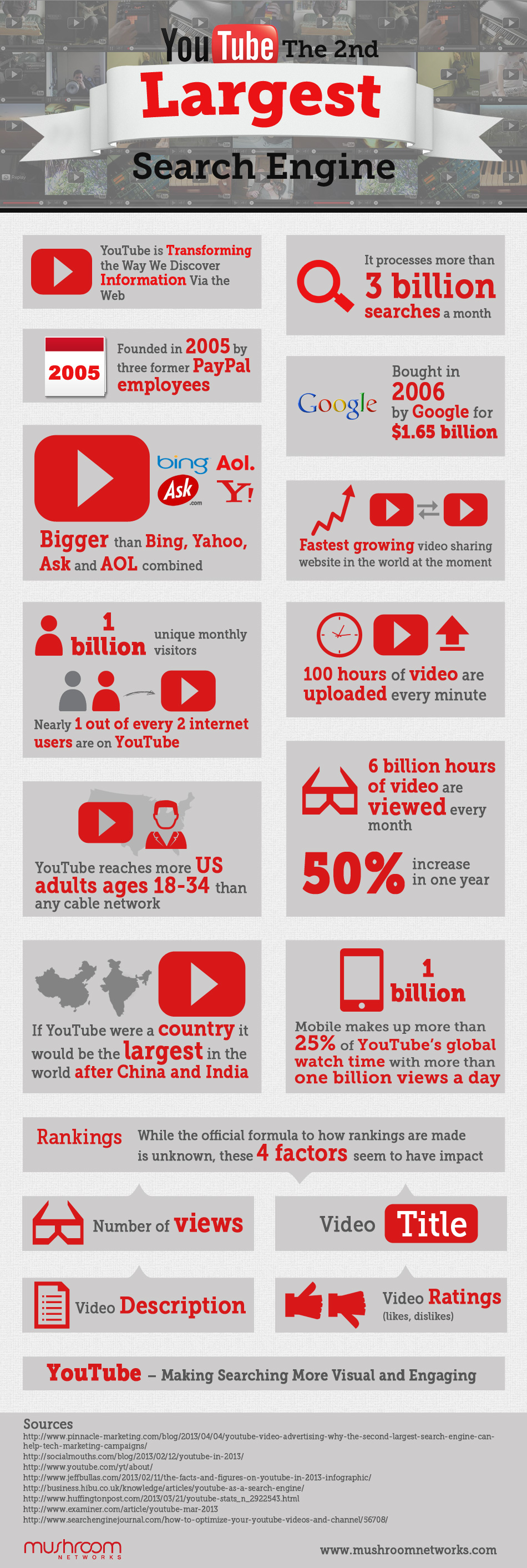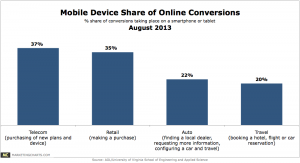
The internet is now able to reach a broader and younger audience than the high street ever was, with 69% of people aged between 12 and 17 reported to have a computer, many of whom will be strongly influenced by the rippling effect of their friends on social media.
The latest Mobile Youth report revealed that 50% of young people recommend a brand because they have had a positive experience with it, and that 88% of all positive recommendations for a brand are generated by fans who make up 10% of the brand's customers.
Young people have such a grasp of technology that it's natural to them – it's a gateway to exploring their interests and sharing their lives. So they're brand-aware and tech-literate, but how do you stay cool today with a young person whose trends and tastes are so fickle? Having helped companies do this for over 20 years, here are my top five tips for better engaging the youth of today.
1 It's all about big data and small data
The more people use the internet, the more brands can potentially learn about the activity of their consumers – and the more they can tailor their offer to suit them. When it comes to brands, it's all about big data and small data: being able to gather as much data as possible and filter it in such a way that the information becomes meaningful and valuable, so that we can learn from interactions with our customers and make improvements in the ways we service them.
We need to use this data to create an age-appropriate online presence. Just as data feeds a more bespoke marketing approach, you need to break your targeting at different levels. Many classify tweens and teens in one large cluster, but there is a lot of emotional, social and physical growing in these years. What is right for an 11-year-old girl is different from that for a 13-year-old boy.
2 Be in association with…
Celebrities set the pace for staying on top of the latest fashions. Brands piggyback on these fashionistas to get to the consumer and convince them they, too, can get the look. Use them to boost your brand's youth appeal.
But, if you don't have easy access to Lady GaGa, take a brand of the moment to achieve the same effect. Your brand might be a massive juggernaut in terms of size and market share, but has lost its coolness. Link with another brand to bring it back. This is how the brand licensing market has got so powerful and you only have to look at brand associations for festivals such as Coachella (H&M, Heineken, Red Bull and Fruttare) to see how cool associations can sell products.
3 Create the right digital channels but also look at offline
As James Withey, head of brand insight at Precise, says: "Make everyday online encounters entertaining for kids. So the launch of a new quirky toy in a cereal box might be more successful in generating online word-of-mouth mentions than major product launches or ad campaigns."
If you want to reach out to a younger audience, you need to remember that they are still kids at heart and as such give them something entertaining to do, such as creating their own online avatar, which they can use to try out their own fashion tastes and share with their friends.
4 Move your brand with your core customer base
If your customer base is 13 years old and you find it is becoming younger, create a brand extension aimed at older teens that allows you to keep your existing customer base but gives those who might be tiring of it a new dimension to be interested in.
We all know Mark Zuckerberg and fellow students created Facebook as a social network for them while at Harvard. The latest statistics claim that there are now 1.06 billion monthly users, which means that, far from a communication medium for young people, it has become a mainstream tool for those wanting to communicate. In fact, 65% of Facebook users are over 35. However, where Facebook has been clever is by introducing instant messaging, which young people are more likely to use.
5 Give young people a voice and make sure it matters
Brands that really listen to their customers tend to be the ones their customers want to buy from. Social media means people are used to having a voice and using it from a young age. They are used to airing their opinions not only to their friends, but their friends' friends and all their followers. They expect those opinions to be taken seriously and are often happy to have their opinions out in the air to be debated and discussed.
Brands that ask for and use these opinions –which flavour of Walkers Crisps to launch or what name to choose for the latest X Factor band, for example – are the ones that bring discussion out of the brand arena and make customers brand ambassadors.
Early adoption means we need to be more savvy as brand guardians. As our target audiences become more sophisticated at a younger age, we need to stay one step ahead of them, understanding what they like and don't like and what they interact with.
Written byMax Eaglen
DealerNet Services
The online video sharing service, developed by a trio of former PayPal employees in February 2005, now allows users to upload, watch, and share videos to each other and to other websites, such as Facebook.
At present, the headquarters of YouTube is in San Bruno, California. It shows an extensive array of video content generated by users though HTML5 and AdobeFlash Video technologies. The typical uploaded contents are a movie and TV clips, music videos, video blogs, educational videos, and original videos.
YouTube was established by three former employees of e-commerce firm PayPal: Chad Hurley, Steve Chen, and Jawed Karim. Reports say Hurley and Chen coined the idea for YouTube in the early part of 2005, after they had a hard time to share videos taken from a dinner party at the San Francisco apartment of Chen.
Karim was not at the party and even denied it happened. Karim said the motivation to create YouTube was because of the 2004 Super Bowl incident, wherein the breast of Janet Jackson accidentally slipped in her performance on stage. He had a hard time to look for a video clip of the event online. He said this led to the idea of an online video sharing service. However, Hurley and Chen said the original development plan was to build a video version of Hot or Not, an online dating service.
Nearly all of the videos uploaded on the website are by individuals, even though YouTube partners, such as BBC, CBS, Hulu, Vevo, and other major organizations, provide their own videos on the site.
YouTube does not require users to register before they can watch videos, but the advantage for members is their unlimited number of video uploads. In addition, videos deemed potentially invasive or disturbing are accessible only to registered users 18 years old and above.
In 2006, Google bought YouTube for $1.65 billion and the company now functions as a subsidiary of the online advertising and search engine giant.
In November 2011, Google integrated its social networking site Google+ with YouTube and its web browser Google Chrome. The move allowed YouTube videos to be watched directly from Google+. A month after that, YouTube launched its new user interface, with video channels shown at the center of the homepage, the same way social networks present their news feed. In addition, a new version of the YouTube logo was used with a darker red color.
The title for the most viewed YouTube video is held by the music video of South Korean singer PSY with his song “Gangnam Style.†It was uploaded on July 2012 and surpassed the leading videos at the time to be the first YouTube video with 1 billion views on December 2012.
To highlight its achievements and statistics, Mushroom Networks has packed the most recent information about YouTube in an infographic.
By Francis Rey Balolong
DealerNet Services

Mobile Devices Accounting For Almost One-Third of Online Conversations Across Major Verticles
Tags: A study of 100 million “conversion events†across 4 major verticals (telecom, retail, auto, and travel) and multiple devices – including mobile phones, desktop computers, and tablets – reveals that 31% of said conversions took place on a mobile device. The study, conducted by AOL in conjunction with the University of Virginia School of Engineering and Applied Sciences (SEAS), also finds that 65% of mobile conversions took place on a tablet.
A study of 100 million “conversion events†across 4 major verticals (telecom, retail, auto, and travel) and multiple devices – including mobile phones, desktop computers, and tablets – reveals that 31% of said conversions took place on a mobile device. The study, conducted by AOL in conjunction with the University of Virginia School of Engineering and Applied Sciences (SEAS), also finds that 65% of mobile conversions took place on a tablet.While Android and iOS devices each accounted for roughly 50% share of smartphone conversions, the iPad was the dominant tablet device, at 85% of conversions.
The proportion of conversions taking place on a mobile device has grown by 28% over the past year, according to the researchers.
Telecom appears to be the most heavily influenced vertical of the 4, with 37% of new plan and device purchases coming from a mobile device. Next up was retail, with 35% of purchases occurring on a smartphone or tablet. Auto (22%; referring to finding a local dealer, requesting more information, configuring a car, and travel) and travel (20%; referring to booking a hotel, flight, or car reservation) were relatively less influenced.
Consumers are now spending one-quarter of their digital time at home on their tablets or mobile phones, according to the study, and three-quarters of the mobile ad impressions tracked were viewed inside the home. While the researchers note that this “runs counter to the prevailing wisdom†that most mobile device use occurs outside the home, that view has been debunked several times, as discussed here.
About the Data:Â The data is based on 500 billion impressions served by AOL Networks during portions of 2012 and 2013.
by MarketingCharts staff
DealerNet Services
This isn’t the first time this kind of study has been done but this one has two things going for it. The first is that it is current. The second is that it comes from Pew, which we have found to be one of the truly unbiased research outfits in the market. Current and not being spun as some kind of PR is appealing to us.
First, a look at overall use of social networking by age.
Now let’s take a look at Twitter.
Â
Once again, is this data shocking? Not at all but it’s important to grasp who is using social networking so that it may be applied appropriately by marketers and others who are looking to reach specific groups with their message.
Were you surprised by these numbers? If so, what make you look twice? If not, what do you make of the findings?
By Frank Reed
DealerNet Services
 So how smart is it for small businesses to invest in giveaways especially when their profits are already wafer thin and they’re struggling with their marketing strategies? The answer is of course yes! Giveaways are a worthwhile investment and go a long way in not only building better relationships with your existing customers but also comes in handy in making new clients.
So how smart is it for small businesses to invest in giveaways especially when their profits are already wafer thin and they’re struggling with their marketing strategies? The answer is of course yes! Giveaways are a worthwhile investment and go a long way in not only building better relationships with your existing customers but also comes in handy in making new clients.Almost all small businesses are heavily dependent on their returning customers which constitute their 80% sales. Following are some of the reasons which make free giveaways a worthwhile investment for small businesses.
Customer retention
Customer retention is of utmost importance for wholesale suppliers since their business largely depends on a few big clients. In an industry where clients are hard to come by, wholesale traders must do whatever it takes to retain their existing customers since, as mentioned earlier, they are their primary source of revenue. Giveaways go a long way in showing just how much you value your special customers. Customers too in return feel the obligation of staying committed in their dealings with you and do not look for other suppliers.
Building better relationships
There is no better way of building trust and developing stronger relationships with your customers than via free giveaways. They are the best possible way to appreciate your valued clients and show them just how much they mean to you. Giving presents as such is a good practice and should be a norm because it literally spells out just how much the customer means to the company.
Free marketing
Before you give anything away, you should make sure that all of your giveaways bear the logo of your company. Giveaways with company logos and trademarks offer long lasting, cheap marketing for both your business and your product as well.
If, as an example, you have given away a paperweight to your client, you can be sure that it would do more than just weigh papers down! A desk, office accessory that your client puts on his office table is there for everybody he meets, greets in his office. So in that sense, you are not only reaching out to your client only but also to those who are your client is reaching out to.
Because of these and many other reasons, I believe this season every small business must invest in free giveaways.
Written by Robert.
DealerNet Services
 Every once in a while I stop for a moment and consider just how radically different marketing is today from what it was just three years ago. Looking no further than my desk, I am quite amazed at how my job has changed in just that short time.
Every once in a while I stop for a moment and consider just how radically different marketing is today from what it was just three years ago. Looking no further than my desk, I am quite amazed at how my job has changed in just that short time.Previously, marketing seemed more an art than a science. It stood in contrast to IT, finance, and operations -- the enterprise functions that lived in a more structured and quantifiable reality than marketing.
Back then, the concept of strategic alignment across organizational lines usually seemed limited to the domain of those in the C-suite. They still focus on it to be sure, but now strategic alignment is also a concern of marketing.
Traditionally, the consumer packaged-goods industry was the leading on in which management engaged marketing in enterprise-wide alignment. It's not surprising considering the nature of the CPG business, and that focus on alignment became known as brand management. As Phil Kotlerattests in this short video, good brand management rests squarely on the shoulders of strategic alignment. The idea is not simply to communicate a brand promise, but to also fulfill that promise with well orchestrated execution and delivery.
What has changed? Now the world is increasingly lived online. The advent of social media has also tipped the scales of business communications decidedly in favor of the consumer. Therefore, customer-centricity is not merely a concern for soap makers and cereal purveyors -- it's essential for all businesses. As a result, brand-management approaches that depend on internal alignment are key to marketing success across industries. Alignment increasingly entails marketing and IT, given the online nature of our digital world.
More than ever, great marketing is about spot-on execution that delivers what's promised.
It follows then that it is not only important to align across departments, but also to align withinthe marketing department through marketing-operations management. It's no longer optional -- marketing-operations management is critical to planning and executing marketing that grows your business. When you can integrate marketing-operations management with marketing automation, adaptive customer-experience management, social media analytics and marketing optimization, then you have your hands on all the major levers that engage your market and grow your business in ways that are structured and quantifiably effective.
Marketing operations management enables success, because you’ll achieve greater consistency, efficiency, and effectiveness by automating and integrating marketing processes and workflows. Key components of this process include marketing-strategy development and planning, asset creation, campaign execution, and post-campaign analysis and reporting.
With the right approach to marketing-operations management, you can plan and develop marketing programs and workflows based on corporate initiatives, and then deliver confidently at a tactical level with consistent messaging, collateral, and execution methods. If you add budgetary views to that operating model, you achieve fiscal control while enabling collaborative planning, allocation, and program execution.
In a nutshell, that's how marketing-operations management supports strategic alignment. For more details, you might be interested in downloading this whitepaper, "Integrating Marketing Operations: How Marketers Can Align Their Strategy and Planning with Overarching Corporate Goals."
Written By John Balla
DealerNet Services
That’s why looking to the past – not to the future – is the key to success in the world of data.
Here’s a quiz: What’s the most meaningful piece of digital data about you?
1)Â Â Â Â Â Â Â One of the 100-plus third-party cookies dropped on you today.
2)Â Â Â Â Â Â Â Your 2004 @gmail.com address or 1997 @AOL.com email address.
While you may not think of it this way, the oldest piece of useful digital data about ‘you’ is probably your personal email address. Your email address is the Internet equivalent of a combination birth certificate, driver’s license and passport. As a digital person, you are virtually born the day you get your own email address.
What’s so valuable about something that everyone has?
Uniqueness. Email addresses are personal by design – no one’s been able to devise a better “openID†– and they establish a persona that is very descriptive. AOL, Hotmail, Yahoo or Gmail – your email tribe membership card is like a geologic sedimentary layer.
Longevity. Unlike short-lived cookies, email addresses have half-lives that are growing every year – since people tend to keep their personal addresses forever. How long have you had your personal email address? Why would you ever get rid of it? Probably not. It’s become your digital name.
Portability. Email works in mobile as well as it works on desktop. You carry your email addresses along with you on every device, unlike the device/browser-dependent cookie. The first thing you do when you get a new device, to make it useful, is setup your email address (and for many, your Apple ID, which is an email address, of course). Services like “Last Pass†are the closest cookies come to portability are services.
Access. Email addresses have become your de facto login for every site and app you visit and use. It’s now practically impossible to use the Internet without an email address – even if you don’t subscribe to a single email newsletter.  Try it. I dare you.
With the third-party cookie under attack from Do Not Track, marketers have been looking for the next big thing. That’e email, thanks to the MD5 hash,  privacy-friendly 32-character one-way encryption of the email address. This simple process has allowed Facebook, for example, to create a “custom audience†targeting product that allows retailers to upload hashed customer data segments to target their subscribers who are spending time on Facebook – and show them an ad consistent with their customer status.
And when paired with a cookie downloaded at the time an email is sent and opened, email-address hashing works for display retargeting too.
In the coming months, you’ll start seeing so-called “custom audience†capabilities arrive from Twitter, PayPal, Amazon, you name it. Any site that requires an email address as an account login can get into this game. As marketers realize the superiority of the email hash, they will be bringing long-tail CRM data online, and we’ll all be better off for it. After all, who wants to spend for a prospecting campaign to their best customers?
Take another look at your old email address. You’re looking at the future.
Wriiten by Dave Hendricks
DealerNet Services
The Importance Of Influencing Pre-Market Consumers On Social Marketing
Tags: 63 percent of car buyers have an initial brand in mind before they begin researching their purchase. (Source: Google/think)
63 percent of car buyers have an initial brand in mind before they begin researching their purchase. (Source: Google/think)Why should you care about this stat that has to do with a category in which you likely do not compete?
Great question.
You should care because what this demonstrates – check that, proves – is that consumers’ brand preference and purchase intent is being influenced in the pre-market stage of their purchase path. That is, they are making critical decisions that will influence their purchases even before they are thinking about making a purchase.
Powerful stuff.
So, what does this have to do with social media and content marketing?
Another great question.
Well, this has a lot to do with it actually. Social media and content marketing affords us the opportunity to forge relationships with consumers at every stage of the purchase cycle – pre-market, in-market and post-market.
By finding ways to develop relationships with consumers before they are thinking about making a purchase – in the pre-market phase – we can influence brand preference, land our businesses within consumers’ initial consideration set, and dramatically increase the chances of making a sale to consumers when they are ready to make a purchase, or when they are in-market.
How can you do this?
That’s right, probably the best question yet.
There are actually a number of ways that you can do this, and a number of things to bear in mind when doing so.
Here are a few thoughts for how you can develop relationships with pre-market consumers that work toward influencing their purchase decision in your favour:
Provide value that is contextually relevant
I write about the importance of providing true value to your audience on social media a fair bit, but it is absolutely imperative when we’re talking about influencing pre-market consumers. The value and relevance of your content is what is going to attract them to your brand even before they’re thinking about making a purchase. Depending on your strategy it can also build credibility, establish trust, sway perceptions, and more.
When developing your content strategy for connecting with pre-market consumers, the content they view as being valuable may be different that what in-market or post-market consumers see as being valuable. They aren’t yet invested in your business or brand, and they might not even be thinking about your category at this point! This can dramatically affect the content you should consider producing, though it should always retain relevance to your value proposition.
Don’t pitch them
This is pretty simple, but don’t bother pitching to pre-market consumers. Don’t try to sell to them. They’re not shopping, so you shouldn’t be selling. Just think about how annoying it is when a salesperson approaches you and is pushy when you’re just browsing, or accompanying a friend with their purchase.
Avoid turning pre-market consumers off of your business or brand by laying off the pitch until your consumers have indicated they’re ready for it.
Invest, be patient and be confident
What I’m talking about here is no flash in a pan solution to selling like crazy on social media. This is an approach that will take time, and the value of which will be more apparent in the long run.
Invest in connecting with pre-market consumers today so that you can sell them not tomorrow, but six months from now, or a year or two from now.
This approach will yield returns, but they won’t be the immediately apparent returns of cutting prices, or holding a BOGO event. Be patient and confident in your strategy and you’ll see the benefits in due course.
_
This approach of targeting pre-market consumers is not intended to work for every business. If consumers in your business’ category go through a short purchase cycle, or purchases are made by impulse, then there may not even be such thing as traditional pre-market consumers in your category.
However, if purchase cycles are sufficiently long, and the financial payoff of converting social media activity to a sale is high, then I strongly recommend you start thinking about your social media and content marketing activity to pre-marketing consumers as an amortizing investment.
How do you target pre-market consumers? How do you get people interested in your business even if they’re not looking to make a purchase? Have you had any success attracting people to your brand even if they’re not considering making a purchase?
Written By Matthew Peneycad
DealeNet Services
 Pinterest has quickly evolved from a simple idea to one of the most popular, revenue generating social media platforms. In the last 5 months alone Pinterest has grown its user base 43.7 percent to more than 70 million. These users aren't merely pinning pictures; they're buying products.
Pinterest has quickly evolved from a simple idea to one of the most popular, revenue generating social media platforms. In the last 5 months alone Pinterest has grown its user base 43.7 percent to more than 70 million. These users aren't merely pinning pictures; they're buying products.Most social media channels lack the ability to drive non-assisted conversions and rely on attribution to justify spend. New studies are constantly being released showing that referral traffic from Pinterest converts directly into e-commerce conversions.
So how can SEO professionals and e-commerce companies unlock the potential of this new channel?
SEO: Acquire More LinksBuilding relationships is at the core of any ethical, results-oriented link building campaign. Identifying related bloggers and key influencers is the first step toward building these relationships and acquiring new links.
Pinterest is a great way to discover new blogs for your outreach campaign. Pinterest's search functionality makes it easy to find relevant boards. For example, if you work with or for a lawn care provider you may search on Pinterest for “weed control†boards and get the following result:

There are so many related boards and pins that I could have scrolled for hours.
In order to boost your outreach program it's important to only focus on Pins that were linked from a website as opposed to simply uploaded by a user. Every website you find is now a potential site to get a link from.
It's also important to pay attention to key influencers even if they don't pin from a website. Most users will link other social media handles with their Pinterest account. If you identify a popular user in your niche, check to see if they have a Twitter account that may include a website that they own or blog for.
E-commerce Brands: Sell More ProductsThe vast majority of online retailers aren't capitalizing on the revenue potential that exists on Pinterest. Images are an extremely powerful tool that can increases sales exponentially.
What channel is seeing the largest budget and click growth amongst online retailers? What's driving all of Google's incremental ad revenue? Answer: Product Listing Ads! (For more information on the growth of PLAs check out this post.)
Pinterest is slowly but surely moving to a paid model that will mimic Google PLAs. A few months ago they introduced Rich Pins, which give advertisers the ability to include price and availability information for various products (and now Pinterest will alert users when prices drop). They have also expanded their analytics package to give advertisers more information around how users interact with their pins (translation: products).
To maximize your revenue on Pinterest, it's critical that all of your products are pinned.
Utilizing rich pins will increase your conversion rate and attract users who are buy mode. To take advantage of this new feature, companies have to format their product in one of two ways:
- oEmbed
- Semantic Markup using Open Graph or Schema.org
If you don't have the dev resources to implement the proper formatting or get rejected by Pinterest, there are still other options to get your products listed. The boards for your brand should mimic your category and sub-category structure.
Below is an example for Dick's Sporting Goods golf category. Any of their golf categories or sub-categories would be great candidates for potential Pinterest boards.
Written By George Fischer
Dealernetservicesonline.biz
 Words are hooks, words are levers There's a debate raging in my town over whether or not to replace the existing planted-grass school football field with what used to be known as Astroturf. One side has already won a crucial victory: the local paper calls the new alternative, "turf."
Words are hooks, words are levers There's a debate raging in my town over whether or not to replace the existing planted-grass school football field with what used to be known as Astroturf. One side has already won a crucial victory: the local paper calls the new alternative, "turf."Turf is what we call a racetrack, or half a fancy dinner (surf and...). Turf is short and punchy and feels organic. If they had called it 'plastic' or 'fake grass' or 'artificial turf', every conversation would feel different before we even started.
What to call the new diamonds that are being manufactured in labs, not dug out of the ground under horrible conditions? Some want them to be called 'artificial diamonds' or not diamonds at all. Others might prefer 'flawless' diamonds (because they are) or 'perfect'.
Is it a 'course', a 'group' or a 'club'? It might be all three, but the word you choose will change the anchor and thus the leverage that word has going forward. Are you a 'consultant', an 'advisor' or a 'coach'?
Engineers and doctors and other scientists seem to think they're skipping all of this when they use precise, specific language. But the obvious specificity and the desire to scare off untrained laypeople is in itself a form of leverage.
For politicians and others that want to re-invent the language for their own ends--you can work to plant your hook anywhere you choose, but if you torture the meaning and spin, spin, spin, you risk being seen as a manipulator, and all your leverage disappears. If your hook finds no purchase, you have no leverage.
On the other hand, the great brands (Pepsi, Kodak, etc.) planted words that meant nothing and built expensive fortresses around their words, words that now have emotional power.
The only reason words have meaning is because we agree on what they mean. And that meaning comes from associating those words with other words, words that often have emotional anchors for us. This isn't merely the spin of political consultants. It goes right to the heart of how we (and our ideas) are judged.
Written By Seth Godin
DealerNet Services
CALENDAR
CATEGORIES
TAGS
TWITTER POSTS
CALENDAR
- powered by
- One Big Broadcast
- creative by
- WebStager
© 2025 One Big Broadcast | All rights reserved


